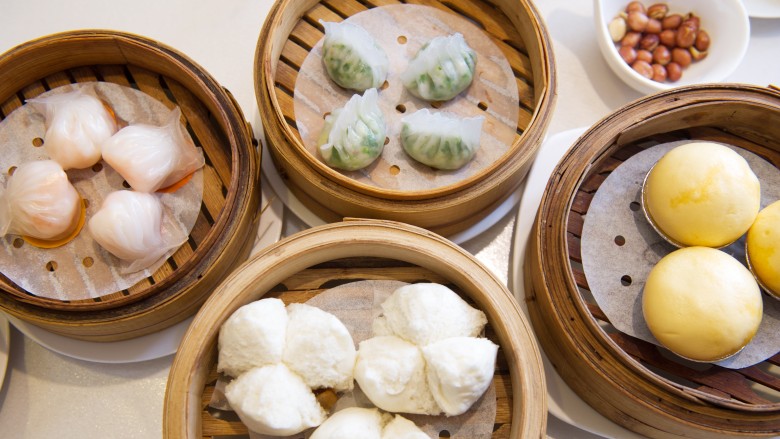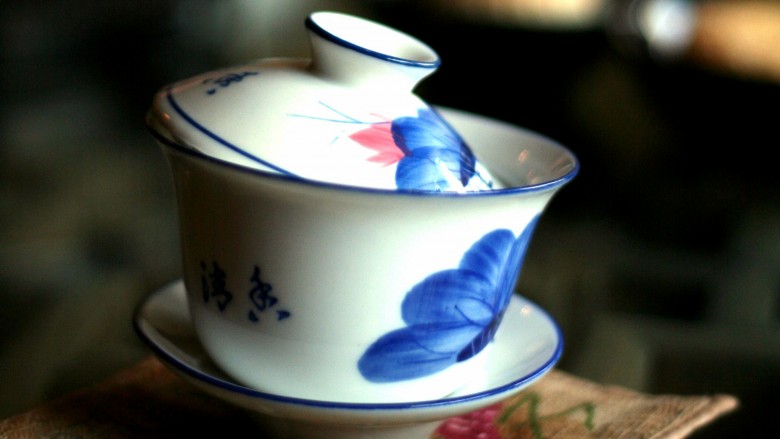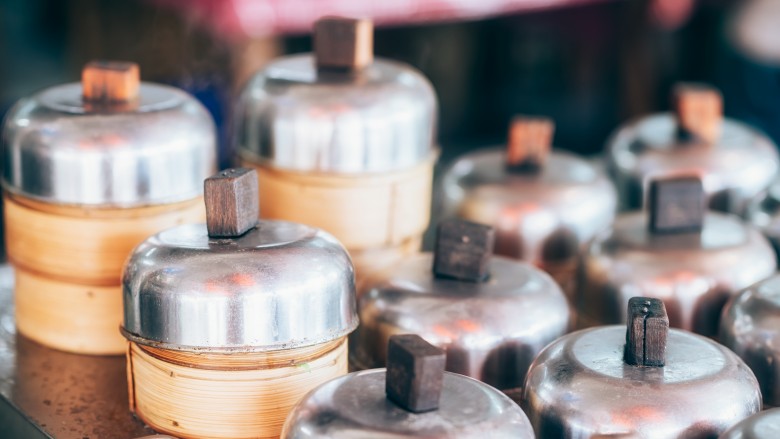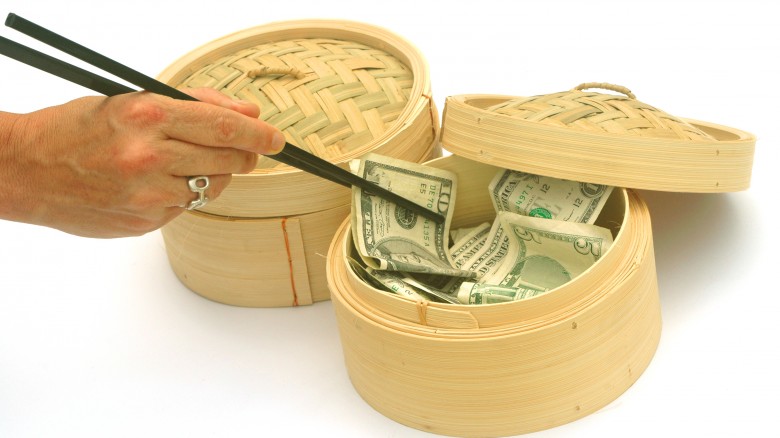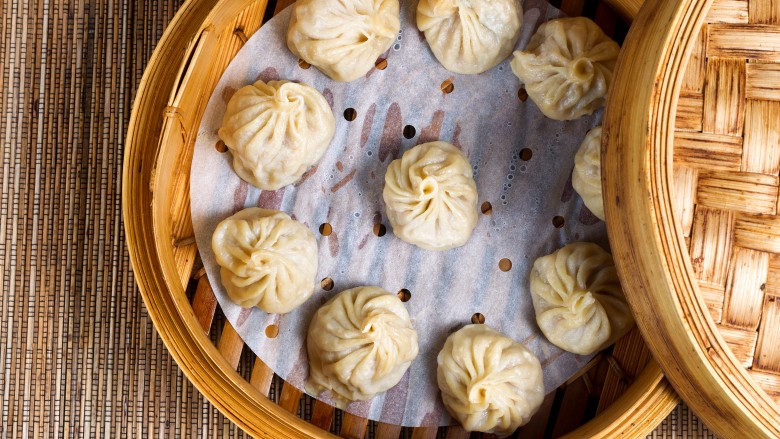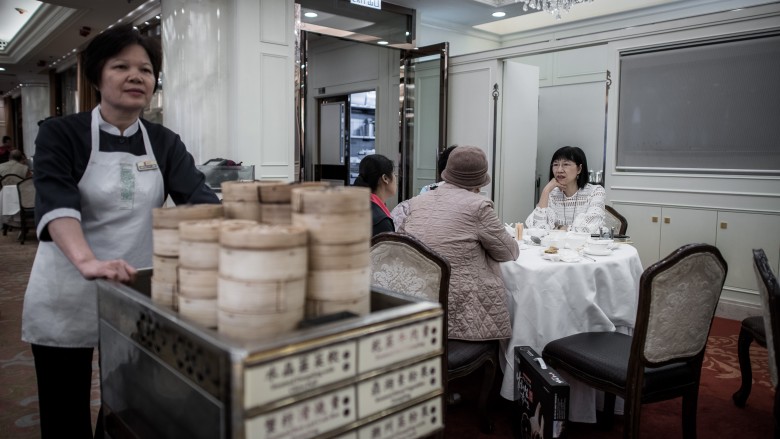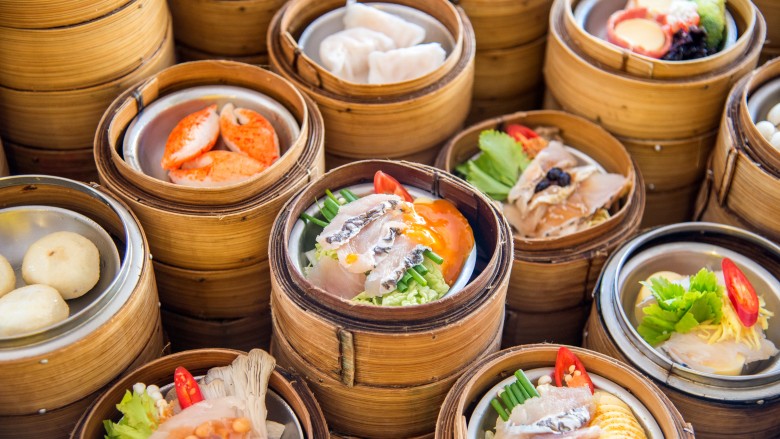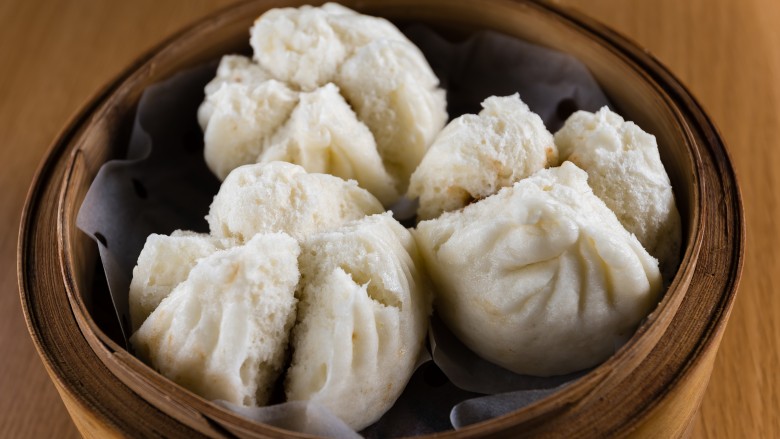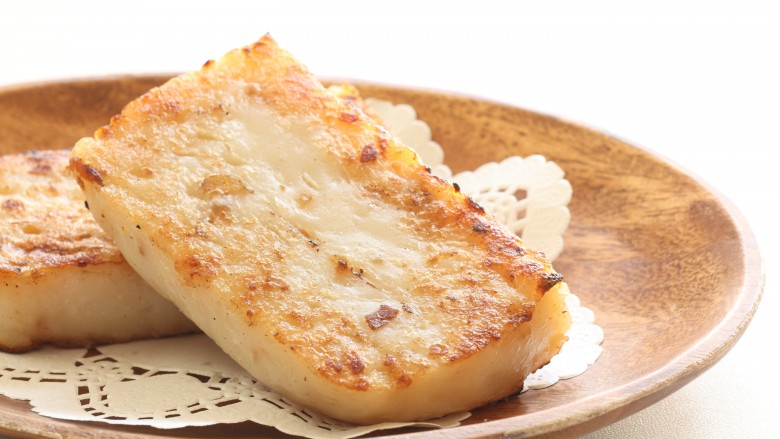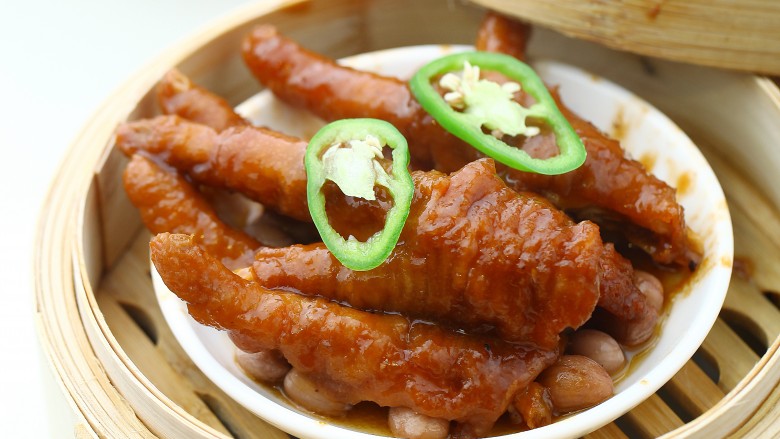Everything You Need To Know About Dim Sum
Many of the childhood memories I have involving family revolve around sharing food. One of the most common ways we connected with each other through food was by enjoying long, leisurely brunches on the weekends. These dining excursions involved loud restaurants, wafting smells of meats and vegetables, and ladies pushing carts containing tiny dishes and steamer baskets of food to the tables, traveling busily in the maze of tables. This was dim sum, and I loved everything from the experience, including the curt but efficient service. From finding my favorite items by scoping out the different carts to handing our table's bill to the ladies so they could stamp it, to sipping jasmine tea from a bottomless pot to wash down the food, I was enthralled by the pageantry of it all.
A distinctive style of Cantonese Chinese food that has become increasingly popular outside of China over the past few decades, dim sum is closely associated with yum cha, which connotes the practice of drinking tea. The phrase "dim sum" can be translated to mean "touch the heart" even as it is often used in reference to the small dishes of food served during a leisurely breakfast or brunch. As soon as you are seated, you receive a blank bill, a pot of tea, and a small dish of chili sauce. As there are ladies pushing carts of food throughout the restaurant, you must scope out the scene and stop them to order the dishes you want. In return, they stamp your bill so that all the stamps can be tallied up at the end of the meal.
According to most food historians, the tradition of dim sum can be traced back to the Silk Road, where pop-up food stands sold small servings of food to the hungry people who traveled along the ancient trade route. However, as yum cha had been long established before the appearance of the trading route and tea drinking is so closely tied to dim sum, some sources argue that perhaps dim sum's origins preceded the Silk Road. While the precise beginnings of dim sum remain murky, the practice of eating small snacks accompanied by tea is deliciously alive and thriving in and out of China.
Here's a down-and-dirty guide to get you acquainted with the nitty-gritty of how to dim sum like a pro. Enjoy!
Dim sum code of behavior
As a first-generation Chinese-American, dim sum comes as second nature to me, but if you haven't had this particular experience before, I can see how it might be confusing. The bustle of carts whirling all around the restaurant, the high volume of both staff and patrons, and the unique billing system might intimidate, but trust me, these things are all part of the fun.
And sharing is caring! If you think of dim sum as similar to tapas, you can understand why the meal is best enjoyed as a shared experience. Since the dishes are small, they're ideal for adventurous eaters who want to try many different ones. The more people there are, the more yummy foods you get to taste. Simple mathematics, right?
Sticks or a fork? While most people use chopsticks to eat dim sum dishes, feel free to ask for forks if you and your tablemates have trouble using the former.
How to get your endless tea
As soon as you sit down at the table, the waiter will bring you a pot of hot tea. My father always said drinking tea in between bites at dim sum helps you digest your food and hence be able to eat more throughout the course of the meal. Wait a few minutes for the tea to adequately steep, then pour away. When you run out, flip the lid upside-down and place it atop the pot. This is a visual cue to the waiter to bring you a fresh pot — just like magic! While tea is the traditional beverage for dim sum, don't be shy about ordering water or soda. The staff is used to these requests.
Get stamped
At traditional restaurants serving dim sum, the small dishes and steamer baskets of food travel on heated carts, each customarily pushed around by a lady yelling out which dishes she has on her respective cart. As the cart passes by your table, you stop her to order what you want. In exchange, she will mark your table's card with a stamp that connotes the type of dish you ordered — small, medium, specialty, etc. At the end of the meal, the waiter comes to tally up the bills so you know how much to pay. That's it!
When the dishes you want never come by...
I have a few favorite dishes that I must order when I go to dim sum. On particularly busy mornings, the cart ladies might never make it to me. On such occasions, you have a few options, depending on the restaurant's layout, the disposition of the waiter, and your level of determination. The easiest way to get what you want is to take your table's bill card and walk over to the cart with the dish you want, order, and carry it back yourself. If you feel comfortable, you can also ask your waiter to track down that pesky dish of shrimp dumplings. Some restaurants have a banquet table in the back where food is being cooked to order. If so, you can take your bill card and walk there to order food.
Tip in cash when possible
After your bill is tallied at the end, you usually walk up to a cashier station to pay the bill. Instead of leaving the tip on your card, it's preferable to leave cash on the table if you enjoyed your service from both the waiter and the cart ladies.
All the things you should do...
DO show your waiter you're appreciative when he or she comes with a fresh pot of tea. Say thank you or tap your index and middle finger together on the table.
DO ask for more chili sauce since there's usually only one tiny dish for the table.
DO tip well since, more often than not, the tips are divvied up between all staff.
DO pace yourself so you don't become prematurely full. The dishes are best enjoyed while they're hot anyway, so staggering the ordering means you get to keep eating hot foods for long stretches of time.
DO try dishes you normally wouldn't since that's half the fun. Be bold!
But definitely don't...
DON'T be shy about ordering desserts before the end. Dim sum dishes don't really have any order and can be eaten whenever you want.
DON'T expect to sit where you want to. This meal is usually crowded, so expect to share a table with strangers.
DON'T fill up on any one thing. Leave plenty of room to order a variety of dishes.
The food
My one and only tip for a dim sum novice? Keep an open mind and try as much as you can. These delectable Cantonese dishes are beloved for good reason. They are deeply flavorful, irresistibly savory, and incredibly warming. If you're unsure what kind of meats are in the dishes, simply ask. While the staff may speak limited English, they want you to partake and enjoy, so they'll try to answer your questions to the best of their ability. If you aren't a strict vegetarian, I suggest trying everything at least once! Here are some of my go-to dim sum items.
Steamed options
Char siu bao: These steamed barbecue pork buns are universally loved for their fluffy exterior and tender filling. The dough is ridiculously pillowy, while the pork inside both savory and sweet.
Har gow: These steamed shrimp dumplings are a dim sum staple. Chopped shrimp, scallions, and bamboo shoots are wrapped in translucent wrappers and steamed to tender perfection.
Siu mai: These steamed dumplings are folded so the tops stay open to reveal the filling. The filling is often made with pork, shrimp, or a combination of both, while the wrappers are made with wheat flour for a more opaque appearance than har gow.
Cheong fan: Due to its crazy popularity, this rolled shrimp dish is one I often have to chase down during peak dim sum hours. Wide steamed rice noodles are wrapped around whole pieces of shrimp and drenched in soy sauce.
Rice-based options
Lo baak gou: Even though these are referred to as turnip cakes, lo baak gou is made with a mixture of radish and rice flour that's been seasoned by meat or seafood. They are hearty little squares of goodness.
Lo mai gai: Another fast-selling item, lo mai gai is a dish of steamed sticky rice, chicken, scallions, and Chinese sausage wrapped in a lotus leaf. It's addictively glutinous and wonderfully savory.
Other all-stars
Fung zao: This dish is controversial since many newcomers to dim sum get squeamish about eating chicken feet. That said, if you do decide to try them, you'll soon discover that they are full of rich flavor.
Ngao yuk kau: Who doesn't love meatballs? This steamed beef variety is served with tender bean curd skin and Worcestershire sauce for maximum deliciousness.
Daan taat: If you want something sweet, try to snag some of these tasty egg custards. With its flaky pastry and smooth eggy filling, these tiny treats are amazing!
I hope you're hungry because a wonderful world of dim sum awaits you.

